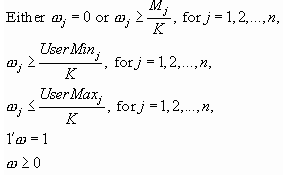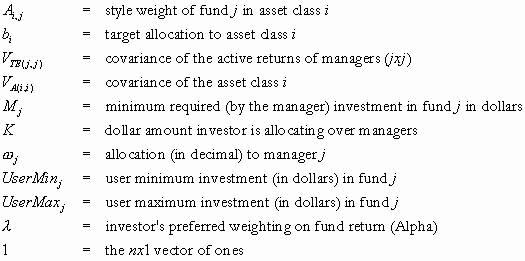

Investors often face the challenge of having to implement an asset allocation or track an investment benchmark using a portfolio of managers or mutual funds. It is difficult to find the blend of managers that would match most closely the investor’s target asset allocation. The task becomes even more complicated, when that portfolio has to account for minimum and maximum investment requirements.
The allocation process addresses this issue by:
Determining a mix that minimizes the difference between the target allocation and the proposed portfolio allocation by using the securities’ style weights already calculated in Morningstar Office.
Fully considering manager-imposed and user-defined minimum and maximum required investment levels.
Choosing the combination of funds that minimizes the tracking error of the calculated optimal portfolio (only in the case where multiple fund portfolio combinations perfectly fit the desired allocation).
For the allocation process, it is very important to select a set of securities that have style weights in all the asset class benchmarks selected for the case. Given a representative set of securities, the planning module will determine the optimal portfolio of those securities by minimizing the difference between actual and calculated portfolio allocations.
Formulas
The planning module uses the Auto Allocate algorithm to select portfolios of managers or mutual funds to implement a target asset allocation. The "Optimal" fund portfolio will minimize both the portfolio tracking error and difference between the actual weights and desired weights.
Once the parameters describing manager performance are accepted, the problem for the investor is to choose an allocation across managers that hits the asset class level target, invests at least the minimum required by each manager that is selected, and is mean/variance efficient in the active return. Formally, the problem is to choose w to solve:
![]()
subject to

where

In general, we will let the subscript i run from 1 to M, and j will go from 1 to n Thus, unless otherwise noted, i denotes asset classes and denotes managers. Furthermore

(Tj is the standard deviation of active return on top of the benchmark.)
